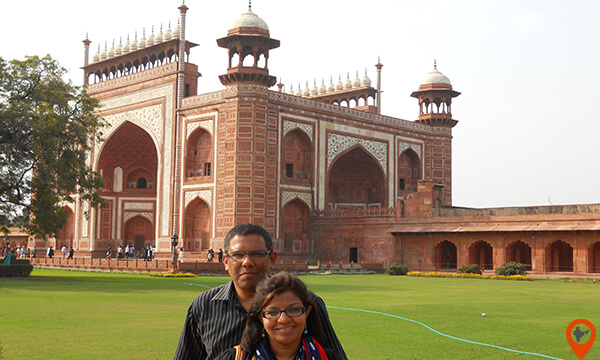
2 days trip to Agra & Fatehpur Sikri
Starts From USD $135
Book NowThe Taj Mahal, one of the New 7 Wonders of the World, is a tomb built by Shah Jahan, grandson of the great Mughal emperor Akbar, in memory of his wife Mumtaz Mahal.
It is an ivory-white monument made of marble and it is situated on the south bank of the river Yamuna at a point where the river takes a sharp turn and flows eastward.
Mumtaz Mahal, who was the niece of Empress Noor Jahan, expired in 1631 CE at the age of 38, when her fourteenth child was born.
She was temporarily buried in the Zainabad garden in Burhanpur and after six months her body was transferred to Agra and finally laid to rest in the crypt of the main tomb of the Taj. This architectural masterpiece was designated as a World Heritage Site by UNESCO in 1983.
Here are a few interesting facts about the monument that is an epitome of beauty and also a great symbol of love.
The land where the Taj presently stands originally belonged to the Kachhwahas of Ajmer.
Shah Jahan acquired this land from them in exchange of four havelis or mansions. Construction began with a number of wells being laid along the river line to support the gigantic buildings.
Over 20,000 artisans were brought in from all across the empire as well as Iran and Central Asia, and they worked under the expert architect Ustad Ahmad Lahauri.
About a thousand elephants were used to transport the building materials. The white marble used in construction was obtained from Makrana in Rajasthan and the semi-precious stones inlaid in pietra dura style came from China, Tibet, Ceylon, Afghanistan and Arabia.
Stunning symmetry and geometric planning is visible in the Taj complex. It includes a 42-acre complex with the large domed tomb in the center. The dome is 35 meters high, about the same size as the base, and it is emphasized by four smaller domes that are placed around it.
They are topped by gilded finials. The main finial was originally pure gold but in the 19th century it was replaced with a bronze copy. Four slender 40-meter-tall minarets are placed on the four corners surrounding the tomb.
The main chamber of the tomb houses the false sarcophagi and the actual graves of Mumtaz Mahal and Shah Jahan are located at a lower level.
Both the interior and exterior decorations feature intricate carvings, inlays, calligraphy, plant motifs and jaali screens. The complex is set around a large square charbagh or paradise garden laid out with tree lined avenues and fountains.
A raised water tank with a reflecting pool is placed on the north-south axis that reflects the image of the mausoleum.
The Taj Mahal itself is placed on a raised marble platform at the northern end of the gardens with its back to the river Yamuna.
This is a mark of architectural brilliance as the raised position places the Taj Mahal against a clear backdrop of the sky.
The Taj Mahal not only signifies the zenith of the Mughal architecture but also immortalizes the love of Shah Jahan for his wife Mumtaz Mahal. While it took around 12 years to build just the tomb and the plinth, the rest of the complex took another 10 years for completion.
Soon after this, the emperor Shah Jahan was deposed by his son Aurangzeb and placed under house arrest in the Agra Fort and he could only look at his creation out of the window. After his death in 1666, Shah Jahan was also buried here beside his beloved.
Around 1857, the Taj Mahal was looted by British soldiers and government officials who chiseled out the precious stones from the walls.
Lord Curzon ordered a complete restoration in the 19th century which was completed in 1908.
A large lamp was added to the interior chamber and the garden was remodeled in the British style giving it a subtler look.
The large dome was covered with a huge scaffold during World War II as the government anticipated air attacks by the Japanese Air Force.
This way, the Taj would look like a pile of bamboos to airborne bombers. During the India-Pakistan war in 1971, it was camouflaged with a green cloth.
The Taj Mahal can be visited by tourists from 6 am to 7 pm every day except for Fridays, when it remains closed to anyone who is not attending prayers at the mosque. Night tours are permitted from 8.30 pm to 12.30 am during full moon but only for 30 minutes.
The four minarets slightly tilt outwards so that during an earthquake they will not fall on the dome and destroy the tomb.
Shah Jahan spent about 32 million rupees in building the Taj Mahal, the current value of which is over a billion dollars.
In the book Badshahnama by Abdul Hamid Lahauri he calles the Taj, rauza-i-munawwara meaning the illuminated tomb. It actually changes colors with different lighting conditions. While the Taj has a pinkish hue in the morning, it looks a little yellowish by noon, turns milky white in the evening and appears golden under moonlight.
Tours for Agra & Taj Mahal
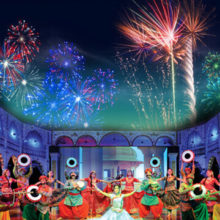

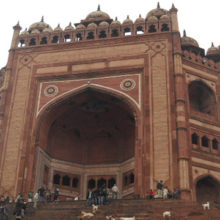
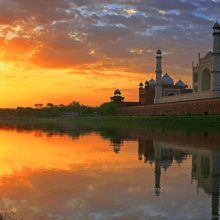
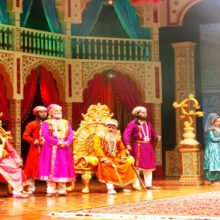
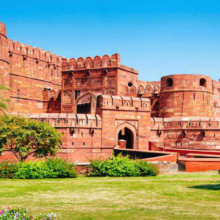
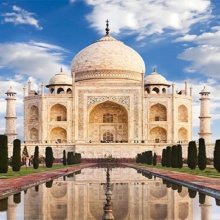
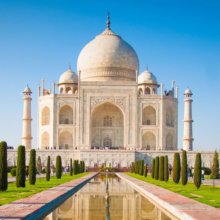

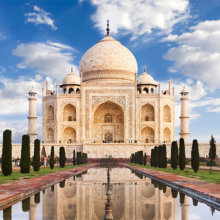
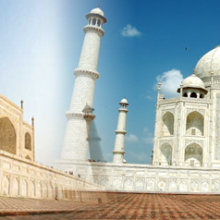


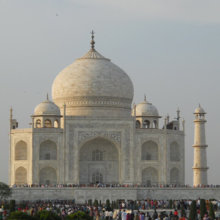

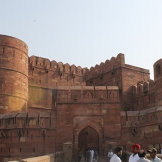
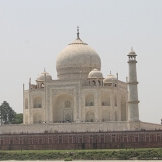
Recent Comments